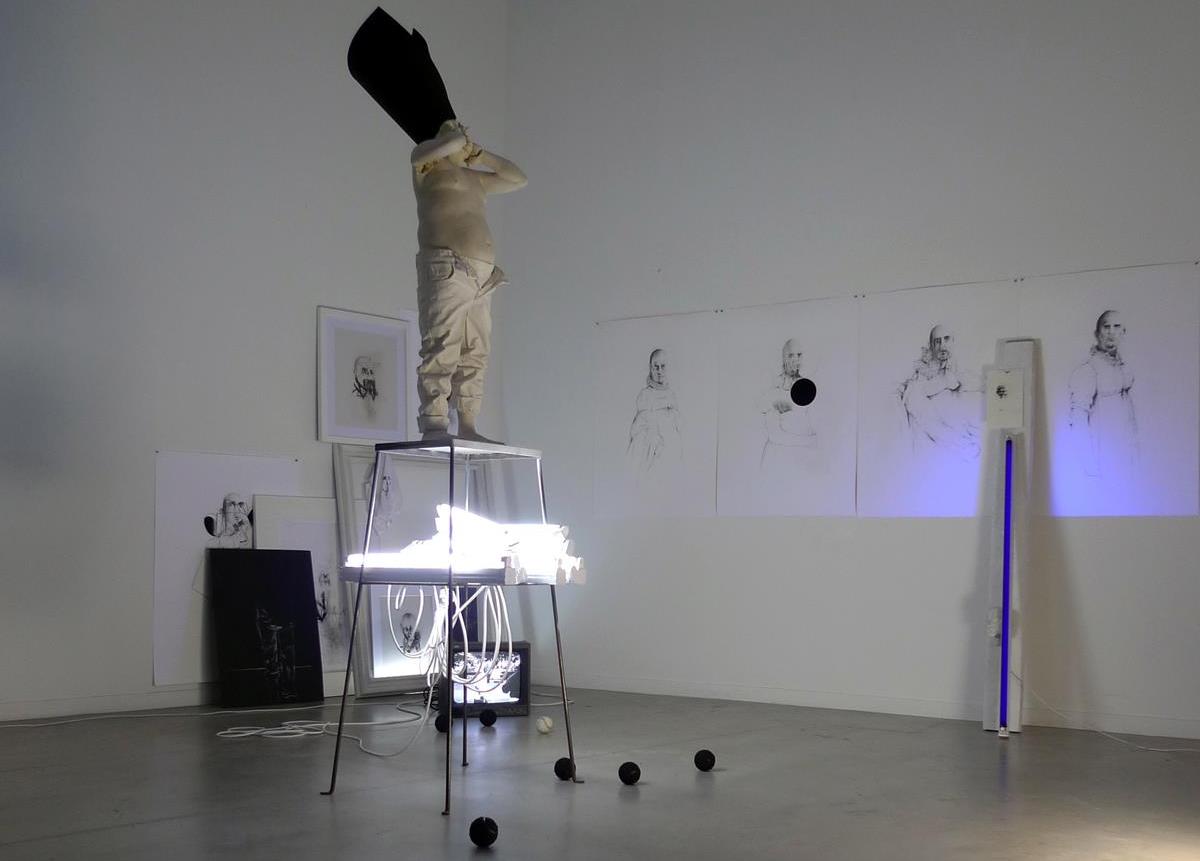Bernardí Roig exhibits for the first time in Galleria Marie-Laure Fleisch, which is located in the same street where this crime was committed. The title of the exhibition La Bolannntro'w is a phonetic transcription in Spanish of the famous phrase uttered by the tennis champion John McEnroe (The ball was in!) in the 1981 Wimbledon Final when he won against Bjørn Borg. McEnroe was well-known for his irascibility and during matches he frequently engaged in heated discussions with the umpire, accompanying these with violent gestures and aggressive language. Roig has created a parallel between this event of 1606 and the more recent one of 1981, reflecting on the meaning of play, violence, transgression and isolation. Through a new group of works, sculptures, drawings and videos, the artist establishes a connection between what one sees, the memory of a place, and historical events, comparing them against reality. The exhibition model is conceived as an “alteration device” which acts on the target themes: the artist constructs dialogue between historical and iconographic traditions from different periods, and uses an equally varied number of heterogeneous narratives which give the work the appearance of being derived from another text.The work moves away from visual illustration to favour a collision of significances to evoke new opinions and interpretations in the visitor. The theatricality of Roig's exhibition—created in the positioning of each element—aims to encourage multiple experiences and interpretations; it’s effect is intensified through the spectral presence of figures, either drawn, sculpted or digitalized, which project one’s imagination beyond their original form. The effect is further intensified by harsh, cold lighting which is also an integral part of the work. As in Dan Flavin’s work, neon light dilates the works, highlighting the limits of the space that contains them, but in Roig's work, light also confuses the vision, impeding the eye which becomes used to the image, thus evoking an inventive and personal reality in the visitor.







